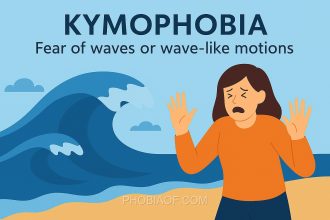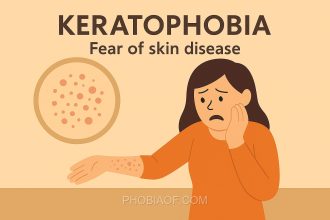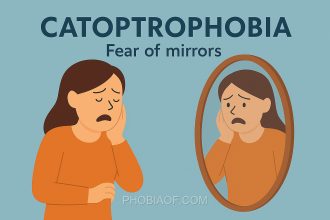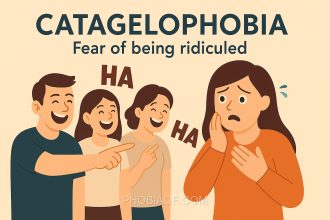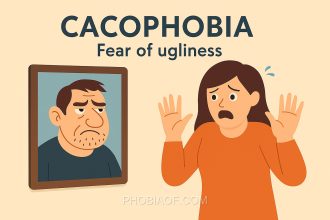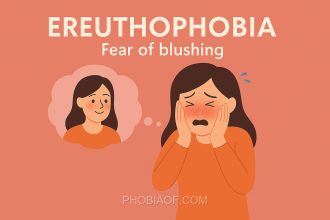Have you ever felt an inexplicable shiver run down your spine at the sight of small, clustered holes? If so, you’re not alone. This sensation might be linked to a condition known as Trypophobia.
Trypophobia is a term that may sound unfamiliar to many, yet it describes a surprisingly common experience. In simple terms, it’s the fear or aversion to clusters of small holes or bumps. The word “Trypophobia” is derived from the Greek words trypa, meaning “hole,” and phobos, meaning “fear.” This fear can be triggered by objects like honeycombs, sponges, or even the small seeds on a strawberry.
While some may dismiss it as a mere discomfort, for others, it can evoke significant anxiety or even physical symptoms like nausea or itching. Here’s how Trypophobia generally affects people:
- Feelings of disgust or unease at the sight of clustered holes.
- Anxiety or panic attacks in severe cases.
- Physical symptoms such as itching, goosebumps, or sweating.
Understanding Trypophobia is crucial in providing empathy and support to those who experience it. By acknowledging and validating these feelings, we can help manage the discomfort it brings and explore ways to cope with this unique phobia.
Causes of Trypophobia
Trypophobia is the fear or aversion to clusters of small holes, bumps, or patterns. While it is not officially recognized as a mental disorder, many people report intense feelings of discomfort or anxiety when encountering such patterns. Understanding the potential causes of trypophobia can provide insights into why certain individuals experience this fear.
Genetic Predisposition
Some researchers suggest that trypophobia may have a genetic component. Just as people inherit traits like eye color, they may also inherit a tendency towards certain fears. If a family member has trypophobia, there may be a higher chance that others in the family could experience it as well.
Traumatic Experiences
Experiencing a traumatic event associated with clusters of holes or patterns might trigger trypophobia. For instance, a painful encounter with insects or skin conditions that create similar patterns could lead to an aversion to these shapes.
Learned Behavior
Fear can be learned by observing others. If someone close to you has a fear of clusters of holes, you might develop a similar fear through observation and imitation. This is particularly common in children who learn behaviors from parents or peers.
Psychological and Environmental Factors
Psychological factors, such as anxiety or a predisposition to other phobias, can increase the likelihood of developing trypophobia. Environmental factors, including stressful living conditions or exposure to images that trigger discomfort, might also play a role.
Interesting Theories and Research
Some theories suggest that trypophobia may have an evolutionary basis. The visual patterns that trigger this fear might resemble those found in dangerous animals or infectious diseases, prompting an instinctive aversion as a survival mechanism. Research is ongoing, but this perspective offers a fascinating insight into how deeply rooted and ancient our fears can be.
While much is still unknown about the exact causes of trypophobia, understanding these potential factors can help in developing coping strategies and reducing the discomfort associated with this fear.
Symptoms of Trypophobia
Trypophobia, the fear of clusters of small holes or bumps, can evoke intense fear or anxiety. For those experiencing this phobia, the symptoms can be both physical and emotional, manifesting in various ways:
Physical Symptoms:
- Panic attacks, characterized by sudden and intense fear.
- Excessive sweating, especially when exposed to trigger images.
- Rapid heartbeat, often accompanied by shortness of breath.
- Nausea or feelings of sickness when confronted with trypophobic patterns.
- Shivering or trembling in response to fear-inducing stimuli.
Emotional and Behavioral Symptoms:
- Overwhelming dread or discomfort when thinking about or seeing clusters of holes.
- Avoidance of situations or objects that might contain or resemble trypophobic patterns.
- Feelings of disgust or repulsion that are disproportionate to the actual threat.
- Difficulty concentrating or focusing when exposed to triggering images.
- Persistent worry or anxiety about encountering trypophobic triggers.
When severe, these symptoms can significantly interfere with daily life, making it challenging to engage in everyday activities or maintain a sense of well-being.
Treatment for Fear of Holes (Trypophobia)
Trypophobia, the fear of holes, can be distressing, but it is important to know that this phobia can be treated and managed over time. With the right approach and support, individuals can learn to cope with and reduce their fear. Below are some proven treatment options and coping strategies that can help.
Therapy Options
- Exposure Therapy: This involves gradually and systematically exposing yourself to the object of your fear, in this case, holes, in a controlled and safe environment. Over time, this exposure can help reduce the fear response.
- Cognitive-Behavioral Therapy (CBT): CBT focuses on identifying and changing the negative thought patterns that contribute to your fear. Through CBT, you can learn to reframe your fearful thoughts and develop healthier coping mechanisms.
- Counseling: Talking to a mental health professional can provide support and guidance. Counseling can help you understand the root of your phobia and develop strategies to manage it effectively.
Coping Strategies
- Relaxation Exercises: Techniques such as deep breathing, progressive muscle relaxation, or guided imagery can help reduce anxiety when confronted with trypophobic triggers.
- Meditation: Regular meditation practice can increase mindfulness and help you remain calm when facing your fears.
- Support Groups: Connecting with others who have similar experiences can provide reassurance and practical advice. Support groups can be a valuable resource for sharing coping strategies and emotional support.
Medication
In severe cases, medication such as anti-anxiety medications might be prescribed by a healthcare professional. However, it is generally recommended to focus on therapy and coping skills as the primary treatment strategies.
Remember, seeking professional help is a positive step if trypophobia is interfering with your daily life. A mental health professional can tailor a treatment plan to your specific needs and guide you through the process of overcoming your fear.
With patience and persistence, it is possible to manage and reduce the impact of trypophobia on your life. Take the first step today by reaching out to a mental health professional or exploring the coping strategies listed here.
Conclusion
In understanding trypophobia, the fear of holes, we uncover not just its causes and symptoms, but also pathways to empowerment and healing. By recognizing the triggers and manifestations of this phobia, individuals can better navigate their responses and take proactive steps toward managing their fear.
It’s important to remember that while trypophobia can be distressing, many people successfully overcome or manage their phobias over time with appropriate support. Whether through self-help strategies, therapy, or medical advice, resources are available to guide you on this journey.
For those who find their fear overwhelming, seeking professional support can be a crucial step. Consider reaching out to a therapist or discussing your concerns with a doctor for personalized advice and treatment options.
Ultimately, embracing the journey towards understanding and managing trypophobia can lead to personal growth and improved well-being. Remember, you are not alone, and with time and support, overcoming this phobia is entirely achievable.

